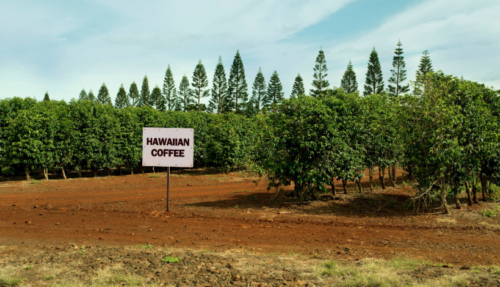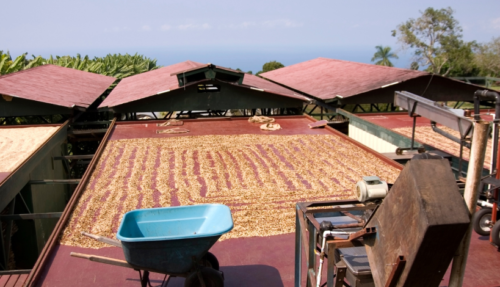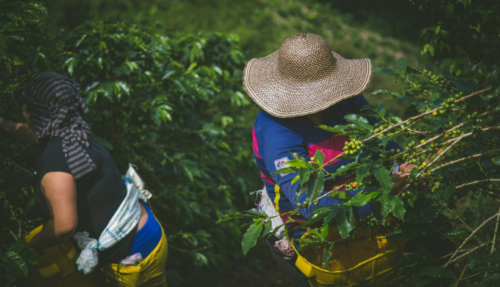If you’re looking for a unique coffee-drinking experience, Hawaiian Coffee is some of the best in the world. From the rich soils and fertile climate of Hawaii’s Big Island to its distinctive flavor profiles, this perfect cup o’ joe is faaaaaar from ordinary. I have had Kona coffee and let me tell you: it’s the richest, most exquisite flavor of coffee I’ve experienced so far (and I don’t say that lightly!)
In this blog post, I’ll take an in-depth look at what makes Hawaiian Coffee so special: where it comes from and why it stands out among all other coffees. So put on some island music and join us as we explore everything there is to know about Hawaii’s enchanting coffees!
What Is Hawaiian Coffee And Why Is Hawaiian Coffee Unique?

Hawaiian coffee is made from the bean of the Coffea arabica plant, which grows in tropical climates like Hawaii’s Big Island. The area of Kona is particularly well known for its exceptional climate conditions that make it perfect for harvesting these beans.
The Kona district on the Big Island features a unique combination of rain, sun and soil that gives the an intense flavor. The deep red and black volcanic soil of Kona is particularly rich in minerals, creating a unique cup of coffee that stands out from other varieties. But that’s just one regional coffee from within Hawaii; we’ll cover all the varieties in just a hot minute.
Hawaiian coffee is known for its bright acidity, nutty aroma and full-bodied flavor. It also has a sweet, smooth finish that lingers on the palate. Kona coffee stands out from other types of coffee primarily because of its unique soil content and climate conditions. The combination of these two factors produces an intense flavor for which Hawaiian coffee is renowned.
While Kona Coffee is the most famous variety in Hawaii, there are several other varieties of Hawaiian coffee that are worth exploring. From the more mellow and nutty Kauai Coffee to the intense Ka’u Coffee, each variety offers its own unique flavor profile for coffee aficionados.
Different Varieties Of Hawaiian Coffee

The islands of Hawaii are known for their delicious coffee, and for good reason. With a range of unique growing conditions and varietals, there are many different varieties of Hawaiian coffee to enjoy.
Kona Coffee
One of the most popular varieties of Hawaiian coffee is Kona coffee, which is grown in the fertile volcanic soil of the Kona district on the Big Island. It is known for its smooth, rich flavor with hints of chocolate and nuts.
Maui Coffee
Another popular variety is Maui coffee, which has a distinct fruity flavor due to the unique combination of volcanic soil and salty sea air found on the island of Maui. No matter which variety you try, Hawaiian coffee is sure to be a delicious treat for any coffee lover.
Ka’u Coffee
Ka’u coffee is grown in the Ka’u region on the Big Island and is known for its robust, intense flavor with hints of nuttiness and sweetness.
Puna Coffee
Finally, Puna coffee is grown in the volcanic soils of the Puna district on the Big Island and has a unique smoky flavor with hints of pepper and spice.
Hamakua Coffee
Hamakua coffee is grown in the volcanic soils of Hawaii’s Hamakua Coast and has a mellow, sweet flavor with notes of citrus.
Kauai Coffee
Kauai coffee is grown in the rich soils of Kauai and is known for its nutty, earthy flavor.
Moloka’i Coffee
Moloka’i coffee is grown in the red volcanic soils of Moloka’i and has a smooth, chocolatey flavor with hints of caramel.
Statistics About Hawaiian Coffee
Hawaiian coffee is one of the world’s most beloved coffees and for good reason. In 2018, Hawaii exported more than $35 million worth of Kona Coffee worldwide, making it one of the state’s top agricultural exports.
However, this number pales in comparison to other countries such as Colombia and Brazil who export hundreds of millions of dollars’ worth of coffee each year.
Tourists to Hawaii can sample the best of Hawaiian coffee by visiting a Kona Coffee plantation or buying locally grown beans. Many stores also offer pre-ground and pre-packaged Kona coffee, making it easy for visitors to take their favorite Hawaiian coffees home with them.
Best Brewing Methods
As with any type of coffee, there are several ways to brew Hawaiian coffee. The best method will depend on the variety of coffee you are using. For example, Kona coffee is typically brewed with a French press or pour-over method to bring out its full flavor.
Maui coffee can be brewed with an espresso machine, while Ka’u can be brewed in a drip machine. No matter which method you choose, make sure to use freshly ground beans the best results.
It’s super important to experiment with the various brewing method to find the perfect balance of sweetness and acidity.
History of Hawaiian Coffee

Hawaiian coffee has a long and storied history that dates back hundreds of years. It was first discovered by Spanish explorers in the 1700s, but it wasn’t until the 1800s that commercial production of Kona coffee began.
In 1827, Don Francisco de Paula Marin introduced coffee to the Hawaiian Islands but it wasn’t until it wasn’t until 1828 when the first successful coffee plantation was established by Chief Boki and his wife Keopuolani at Manoa Valley.
Finally in In 1864, King Kamehameha V issued a royal charter establishing a company that would later become the Hawaii Coffee Company.
Today, there are several hundred coffee farms on the islands and Hawaiian coffee is known around the world for its unique flavor. It’s a favored choice among coffee connoisseurs and tourists alike, making it one of Hawaii’s most prized exports.
In addition to its popularity, Hawaiian coffee is also known for its sustainability practices. Many farms are certified organic and use sustainable farming methods to ensure the best quality beans. This dedication to sustainable practices helps make sure that generations of coffee drinkers can enjoy the unique flavors found in Hawaiian coffee.
Conclusion
Hawaiian coffee is a unique and flavorful variety of coffee that has been grown in the islands for centuries. While Kona Coffee is arguably the most popular, other varieties such as Ka’u, Puna, Hamakua and Moloka’i coffees offer their own distinct flavor profiles so be sure to grab one of our recommendations and give it a try; let us know how you enjoy it.